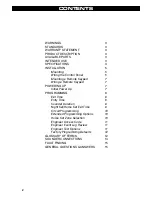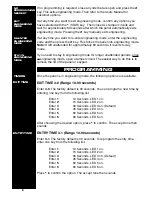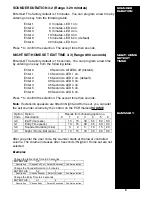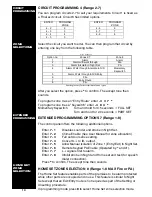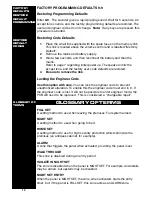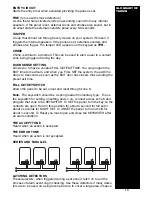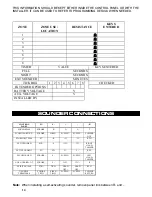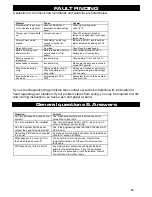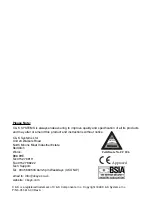
7
MOUNTING A REMOTE KEYPAD
1
Choose the keypad location, and then mark holes for mounting.
2
Make sure the cable is run through the backbox.
3
Screw the backbox in the selected position, making sure the cable is
not twisted.
WIRING A REMOTE KEYPAD
Use 6 core cable for connection of all remote keypads.
Connect the cable into the terminals shown in Diagram C, making sure each
wire goes to a like-named terminal in the panel. C goes to C, D to D, + to +
and - to -. Wire the tamper wires in series with your existing tamper loop.
You do not need to identify individual keypads to the system. If you use
more than one remote keypad, either wire it back to the control panel or
daisy-chain it from another keypad. Wire all connections in parallel with the
exception of the tamper circuit which you MUST
wire in series. (See the
Glossary for series and parallel examples.)
POWERING UP
INITIAL POWER UP
Note:
Keep the lid off the main control panel in order to enter engineer
mode. Alternatively, you can enter
7890 #
to enter engineer mode.
1
Switch the mains supply ON. The internal sounder then starts.
This denotes a tamper alarm.
2
Enter
1 2 3 4
followed by the
#
(hash) button. This silences the
sounder, and the TAMPER LED flashes.
This has now acknowledged and cancelled the alarm; however,
because either the panel or keypad lid is removed, your main tamper
loop is open. This is normal at this time.
3
Connect the battery and walk test the control panel.
This ensures all zones are clear.
4
Power Down and complete the wiring of the control panel.
NEVER wire the control panel live.
5
Power back up, cancel the alarm, and enter engineering mode by
entering
7, 8, 9, 0
.
The panel is now ready for programming.
MOUNTING
REMOTE
KEYPADS
WIRING
REMOTE
KEYPADS
KEYPAD
DIAGRAM
INITIAL
POWER UP
Diagram C


